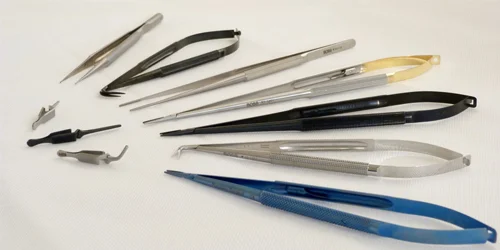Medi instruments are the unsung heroes in the world of healthcare. These essential tools are designed to support medical professionals in providing high-quality care to patients. Ranging from basic diagnostic devices to complex surgical instruments, medi instruments are fundamental to the practice of modern medicine. Their diverse applications, ranging from surgery to routine check-ups, make them indispensable in a medical setting.

The Importance of Medi Instruments in Healthcare
Medical professionals depend heavily on the functionality, precision, and durability of medi instruments to ensure accurate diagnosis and successful treatment outcomes. From a routine physical examination to a high-risk surgery, these instruments are designed to meet the unique needs of various medical procedures. Medi instruments not only help healthcare providers perform critical tasks but also ensure that patient care is delivered safely and efficiently. Without the support of these specialized tools, providing effective healthcare would be a monumental challenge.
Categories of Medi Instruments
Medi instruments can be broadly categorized based on their use in different medical specialties. Surgical instruments, one of the most prominent categories, include tools designed for a wide range of procedures such as cutting, suturing, clamping, and retracting. These include items like scalpels, scissors, forceps, needle holders, and retractors, which are used in various types of surgeries, including general surgery, orthopedics, cardiovascular procedures, and more. These tools are designed for precision and must meet high standards of performance and safety.
On the diagnostic side, instruments such as stethoscopes, otoscopes, and thermometers allow physicians to assess a patient's health. Diagnostic instruments are essential for early detection and monitoring of medical conditions, enabling physicians to make informed decisions about treatment. Advanced diagnostic tools such as endoscopes, MRI scanners, and ultrasound machines offer detailed images of the body's internal systems, aiding in the detection of complex conditions such as cancer, heart disease, and neurological disorders.
Other categories of medi instruments include dental instruments, orthopedic tools, and rehabilitation aids. Dental instruments, including scalers, probes, and forceps, are used by dentists to perform procedures like cleaning, filling, and tooth extraction. Orthopedic instruments, such as bone drills, forceps, and joint replacement tools, are designed for surgeries involving the musculoskeletal system. Rehabilitation tools, including prosthetics, braces, and therapy devices, assist patients in recovering from injuries and surgeries.
The Technological Advancements in Medi Instruments
Medi instruments have come a long way, particularly with advancements in technology. Over time, these tools have evolved from simple, manual instruments to complex, high-tech devices that increase the precision and effectiveness of medical procedures. Robotic surgery systems, minimally invasive tools, and laser-based technologies have revolutionized the way surgeries are performed, leading to faster recovery times, reduced complications, and improved outcomes.
For example, laparoscopy, a minimally invasive surgical procedure, uses specialized instruments that can be inserted through small incisions, allowing surgeons to perform operations without the need for large cuts. This advancement has significantly reduced recovery time and minimized trauma for patients.
Additionally, advancements in imaging technology have enhanced the diagnostic capabilities of medi instruments. For example, endoscopes with high-definition cameras allow for real-time visualization of internal organs, making it easier for doctors to identify abnormalities and perform biopsies.
Quality and Safety Standards for Medi Instruments
The safety and quality of medi instruments are of paramount importance in healthcare. Regulatory bodies, such as the U.S. Food and Drug Administration (FDA) and the European Medicines Agency (EMA), set strict guidelines for the design, manufacturing, and testing of medical instruments. These standards ensure that medi instruments meet the necessary safety and performance criteria before they are used in medical procedures.
Proper sterilization and maintenance of medi instruments are also critical to ensuring patient safety. Infections can easily occur if surgical instruments are not properly sterilized between uses, making infection control protocols an essential part of medical practice. Healthcare providers must follow rigorous procedures for cleaning and disinfecting tools, as well as inspecting them for damage or wear, before they are used in a procedure.
Conclusion:
Medi instruments are the backbone of modern medicine, making it possible for healthcare professionals to perform tasks with precision and accuracy. Whether diagnosing a common cold, performing surgery, or conducting a routine check-up, these tools enable doctors and specialists to deliver the best possible care to their patients. With continuous technological advancements, these instruments are becoming more sophisticated, enabling medical professionals to offer treatments that were once unimaginable. Their role in patient care cannot be overstated, as they ensure that healthcare professionals are equipped with the tools necessary to provide optimal outcomes for patients.
Comments on “Medi Instruments: Key Players in Modern Medicine”